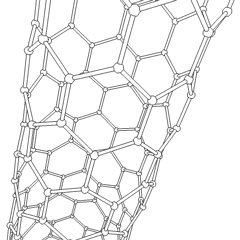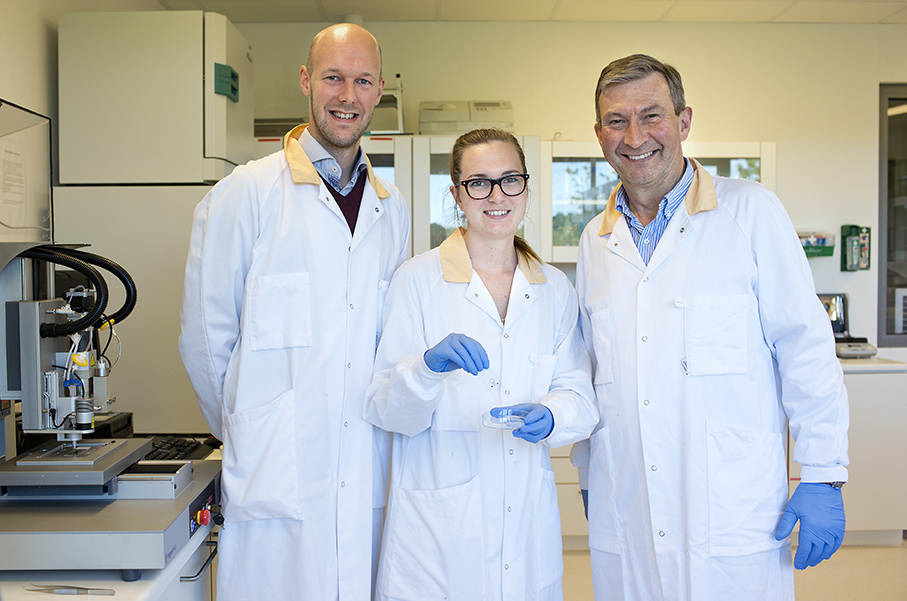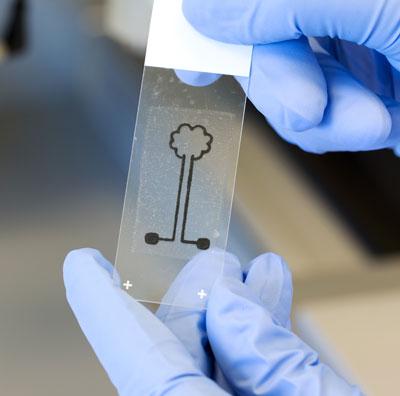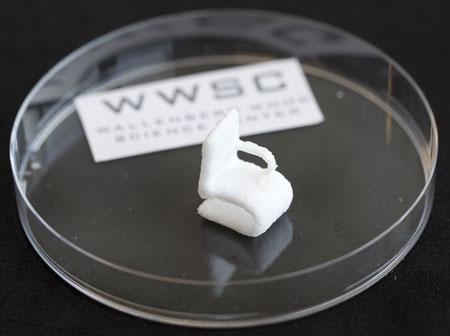Researchers 3D Print Using Electrically Conductive, Carbon Nanotube Infused, Cellulose — Potential For Many Futuristic Uses
 While many individuals and companies remain stuck on the idea of creating more advanced 3D printing hardware in order to print faster, and print in higher resolutions, others are focused more on the material end of the spectrum. These people understand that 3D printing can only go as far as the materials in which they are capable of printing with.
While many individuals and companies remain stuck on the idea of creating more advanced 3D printing hardware in order to print faster, and print in higher resolutions, others are focused more on the material end of the spectrum. These people understand that 3D printing can only go as far as the materials in which they are capable of printing with.
For a group of researchers at the Wallenberg Wood Science Center and Biopolymer Technology, Department of Chemical and Biological Engineering at Chalmers University of Technology, they certainly understand this. The researchers, led by Paul Gatenholm, professor of Biopolymer Technology at Chalmers, made a major discovery in creating a method of 3D printing cellulose for the first time.
As if 3D printing in cellulose wasn’t a big enough discovery, this same group of researchers also found a way to add carbon nanotubes to these structures in order to make this material electrically conductive.

Paul Gatenholm together with his colleagues Karl Håkansson and Ida Henriksson. Christina de la Pena missing from the picture. (image source: Peter Widing)
For a long time, the idea of printing in cellulose has been written off simply because, unlike plastics and metals which are commonly seen coming off of 3D printers, cellulose doesn’t have the ability to melt when heated. The majority of 3D printers on the market work by heating either plastic or metal in order to melt, reshape, and then harden the material to its new form. With cellulose this simply isn’t possible.
The researchers were, however, able to solve this problem by adding cellulose nano fibrils in a hydrogel to the equation. The hydrogel, which is made up of between 95-99 percent water, allows for the cellulose to be printed in single layers and then stacked on top of itself to form 3-dimensional objects. Then, the addition of the carbon nanotubes allowed the researchers to make this unique 3D printed material electrically conductive.
“Combing the use of cellulose to the fast technological development of 3D printing offers great environmental advantages,” explained Paul Gatenholm. “Cellulose is an unlimited renewable commodity that is completely biodegradable, and manufacture using raw material from wood, in essence, means to bind carbon dioxide that would otherwise end up in the atmosphere.”

This circuit is 3D printed in cellulose (image source: Small chair 3D printed in cellulose on a 3D bioprinter. (image source: Peter Widing)
The potential for this technology really is unlimited. Combining a completely renewable resource like cellulose with that of conductive carbon nanotubes could open the world of smart electronics up to a whole new realm of possibilities.
“Potential applications range from sensors integrated with packaging, to textiles that convert body heat to electricity, and wound dressings that can communicate with healthcare workers,” said Paul Gatenholm. “Our research group now moves on with the next challenge, to use all wood biopolymers, besides cellulose.”
In a separate project at the school, researchers are looking at finding a way to create the carbon nanotubes used in this project out of wood. It should be interesting to see how much further Gateholm and his team of researchers are able to take this groundbreaking technology.
What types of products do you think the 3D printing of cellulose with conductive nanotubes will lead to? Discuss in the 3D Printing Conductive Cellulose forum thread on 3DPB.com.
Subscribe to Our Email Newsletter
Stay up-to-date on all the latest news from the 3D printing industry and receive information and offers from third party vendors.
You May Also Like
Gorilla Sports GE’s First 3D Printed Titanium Cast
How do you help a gorilla with a broken arm? Sounds like the start of a bad joke a zookeeper might tell, but it’s an actual dilemma recently faced by...
Nylon 3D Printed Parts Made More Functional with Coatings & Colors
Parts 3D printed from polyamide (PA, Nylon) 12 using powder bed fusion (PBF) are a mainstay in the additive manufacturing (AM) industry. While post-finishing processes have improved the porosity of...
$25M to Back Sintavia’s Largest Expansion of Metal 3D Printing Capacity Since 2019
Sintavia, the digital manufacturing company specializing in mission-critical parts for strategic sectors, announced a $25 million investment to increase its production capacity, the largest expansion to its operations since 2019....
Velo3D Initiates Public Offering in a Bid to Strengthen Financial Foundations and Drive Future Growth
Velo3D (NYSE: VLD) has been among a number of publicly traded 3D printing firms that have attempted to weather the current macroeconomic climate. After posting a challenging financial report for 2023,...
































